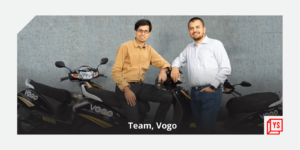- Arkam estimates digital infrastructure can maximise demand among 400 million Indians.
- The early-stage venture cap fund says ‘middle India’ customer buys small-ticket items very frequently.
- The VC firm observes that more of middle India is gaining income and wants quality services now.
- Demand in this market has boosted transactions at Arkam portfolio companies, including KreditBee and Jar.
- Arkam says for India to become a $9 trillion economy, the middle India piece has to work, and the segment needs more products and services.
An unmissable sight, whenever I travel across non-metropolitan India, is the aspiration for growth and business. A few years ago, investors rarely knew about or were excited by these regions. But Bala Srinivasa and Rahul Chandra of Arkam Ventures were among the first to glimpse that opportunity.
The duo will tell you the story of industrial clusters in southern Karnataka’s Tumkur, where they saw blue-collar workers from Bihar and Odisha earning little to no benefits for years. What’s different is that 70%-80% of workers have smartphones now. And SmartStaffer, a company Arkam backs, is getting workers to use its app for tracking wages and comparing jobs.
“The number one click in daily usage of the app is actually to see how much PF or bonus they have earned this week,” shares Bala Srinivasa, Managing Director at Arkam Ventures, in an interview with YourStory.
“Businesses have always tried to invest in India, but what has changed in India is the digital infrastructure. You can maximise the demand potential from about 400 million people.” Bala observes. “When you do that, you have a vast ‘blue ocean’.”
It is a thesis Arkam Ventures bets on — investing in companies that use digitisation to solve problems for ‘middle India’ or ‘Bharat’. By Arkam’s estimates, below the top of the pyramid in India, there is a deep market including labourers, farmers, and small and medium entrepreneurs. Digitisation has enabled financial services, healthcare, skilling, and manufacturing to be distributed widely. As such, the early-stage VC firm has launched a new fund for 20 more startups catering to this market.
“India has developed its industries like most developed nations, catering to the people who can pay high value but in low volumes. But, as economic growth goes deeper, the next 400 million typically buy very small ticket items but frequently,” explains Rahul Chandra, Managing Director at Arkam Ventures, in an interview with YourStory.
“Industry structures can’t cope with this new addition of middle India customers to the buying proposition. So you have to shift gears and make (solutions) more tech-centric,” he adds. That’s what Arkam’s Fund II, with a target corpus of $180 million, will focus on.
The aggregation advantage
According to the duo, middle India is moving from being unbanked 10 years back to slowly adopting financial services such as protection, investment, and savings. As more people gain wealth this way, they want quality services.
When you aggregate these millions of users and build a use case around them, it becomes powerful. The result is non-discretionary, low-price, high-frequency products.
“The defining underlying theme we are seeing is the aggregation of small tickets. The power of aggregation is the defining theme for us. Someone holding even 200 mg of gold can now lease their gold with Jar,” says Rahul.
Bala offers the KreditBee example. When Arkam first met its founders, the company was doing about 75,000-100,000 loans a month with an average ticket size of Rs 10,000-Rs 15,000. Today, it gives more than a million loans each month. Where a bank may spend Rs 5,000-Rs 7,000 to acquire a credit card customer, KreditBee acquires customers for Rs 150-Rs 300 each.
“None of this would be possible without … understanding the customer behaviour of the segment, to attract them to the platform without spending Rs 7,000,” Bala says. KreditBee is turning a sizable profit.
Understanding shifts in the segment
The investor duo looks for three things in founders catering to middle India. One is whether they understand the psyche of this customer. It helps if they are from middle India themselves. Two, do they understand what business models tick? And three, the founders Arkam backs typically make adoption friction-free. For instance, its venture Jumbotail has taken on getting Kirana store owners to move to order stocks on its app.
As an interesting aside, most of the Arkam team, except for Bala, comes from middle India, Rahul says, including Dehradun, Haridwar, Surat and Sikar.
The framework for how we view a middle India consumer is also shifting, Bala says, as digitisation removes traditional segmentations such as urban vs. rural, and tier I vs. tier II. “Millennials are one of the largest segments in India, and a millennial 50 km outside Bhopal thinks similarly to a millennial sitting in Bangalore — in terms of the apps they use, the social media they consume,” he adds.
The beginning of something big
Being an early mover means no competition. “When 40-50% of your customers are new to credit, say in a KreditBee or Jar, you are not trying to switch them away from somebody,” Bala observes. “There is nobody in segments such as financial services, food and agri, healthcare, or logistics.”
The top tier is spoilt for choice, according to Rahul. People get groceries at their door and a refund if there is a problem. But below that tier, the field stayed empty. “People still have to wait at a temple in the afternoon for their package to arrive. So (servicing that need) can be called impact because it is about what difference it is going to make in somebody’s life.”
There is room for new tech-enabled products and services. Arkam estimates 400 million people use UPI, of which 70%-75% have no other financial app on their phone.
Arkam has convinced the opportunity it spotted in 2020 is only going to grow. “To become a $9 trillion economy, the middle India piece has to work. Consumption needs to be there, and these people need to be supported with the requisite products and services,” Bala says.
“Being smack bang in the middle of that gives us a lot of excitement about where we are headed. There is a feeling of satisfaction that you are part of something bigger.”










